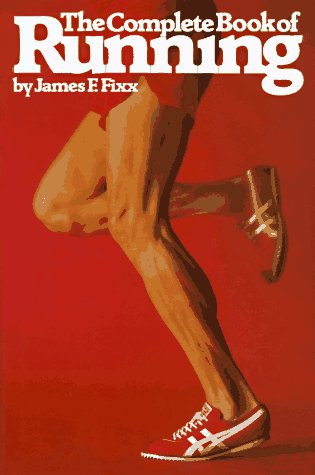
A New York Times bestseller that influenced people to try barefoot or near-barefoot running in the west. I was influenced to start wearing Vibram Five Fingers (VFFs). I even day hiked to Mt Whitney in VFFs.
Born To Run makes a case that modern shoes with a lot of cushioning may feel comfortable in the short run but actually result in foot and leg injuries in the long run. A cushioned shoe changes how we walk and run — we become 'heel diggers'. With minimalist shoes or barefoot, we naturally develop a 'mid-foot strike'. See this video and this video to understand the difference. 'Mid-foot strike' is encouraged by running experts, irrespective of what shoe we are wearing (modern, cushioned shoes or minimalist shoes, or barefoot). For example, see see Chi Running video on Heel Strike. With minimalist shoes is that we naturally gravitate towards mid-foot strike because heel digging is painful without the cushioning found in modern shoes. As of 2012, the jury is still out whether barefoot running is superior to running in modern shoes. There are proponents of both camps.
Born To Run has fascinating stories about the Tarahumara people from the remote and rugged Copper Canyon, Mexico. The Tarahumara grow up running dozens of miles on rocky hills, wearing minimalist shoes called Huarache. A drink called Iskiate, made from chia seeds, is their main source of energy for long runs.
What's special about the Tarahumara is their approach to running. They treat it as a community activity. So even when they participate in races, they go together! Second, they treat running as a joyful activity, to be thoroughly enjoyed! An excerpt from the book:
Finally, the Tarahumara are predominantly vegan! Fewer than 5% of their calories are derived from meat. Their diet consists of corn, beans, squash, chili peppers, wild greens, and chia seeds. See the following articles: (1) The diet and tesgüinadas of the Tarahumara Indians in the Copper Canyon region of Mexico, and (2) The food and nutrient intakes of the Tarahumara Indians of Mexico, American Journal of Clinical Nutrition, 32(4), pp. 905-915, April 1979. Also, see The Tarahumara are 94% Vegan (YouTube).

Jeff Galloway is a long time marathon coach who has written multiple books on training for marathons. What is unique about his style is his emphasis on interleaving running and walking throughout a marathon. For example, you may run for 2 minutes, then walk at a bisk pace for 1 minute, then run, then walk, and so on. One of Galloway's book is titled The Run-Walk-Run Method. One of the articles at Galloway's website traces the history of the Run-Walk-Run Method.
Early in the book, Galloway describes his 3-phase strategy for running injury-free for a lifetime. The first phase is to simply enjoy running 30 to 40 minutes on flat surfaces, for 12 to 18 months. The second phase is to incorporate hills into the route but continue running for 30 to 40 minutes. The second phase also lasts 12 to 18 months. The third phase is to learn interval training or fartlek to improve speed. Galloway warns that the third phase stems from our urges to compete — compete with ourselves or compete with others. These urges to compete are the main cause of injury. So Galloway's advice is to consciously avoid becoming a speed monster if you would like to ensure a lifetime of running, injury-free.
Another thing I remember from this book is the idea of taking breaks. Galloway suggests a 'fractal-like' schedule for consciously taking breaks from running at varying timescales. For example, we should incorporate some days of the week into our schedule as 'rest days' — on these days, we don't run. Similarly, there should be 'rest weeks' — during these weeks, we run substantially less than usual, or don't run at all. Likewise, there should be 'rest months'. Galloway says that if we do not incorporate such rest periods consciously, nature has a way of making us rest through injuries.

I really love this book! Many people imagine that marathon running is about physical preparation. Nope! Running a marathon is a lot about mental fitness. This book emerged from marathon training classes conducted at the University of Iowa over a ten year period. In each class, a psychological techniques was taught to students. These techniques actually go beyond marathon training — they are life skills in general.
One of the first instructions given to students was to buy a pair of shows and register for a marathon. Then start telling everybody, "I am a marathoner. I will finish a marathon in sixteen weeks from now!". By week five, make the narrative longer: "I am a marathoner. I love running! I never get tired. I never quit on a run. I run four times a week and I never miss a training run. I love to run on hills. I run no matter what the weather is like. I will finish a marathon in eleven weeks from now!". Each of these is a firm, positive statement, exuding confidence and beaming with joy!
Another technique in the book is for handling situations when doubts arise. Consider days when the following thoughts creep up: "My legs are really tired today", "The weather is really rotten today", "My legs are sore today". Instead of using such statements as excuses to avoid training on that day, we must simply the presence of these (negative) thoughts, and append the following to each thought: "... but it doesn't matter!" :) This is a powerful technique.
Another idea in the book: do not have limiting thoughts like 'The maximum I can run is ten miles', or 'I can run only at 5mph'. Instead, be open to possibilities! In the context of this idea, the personal story of Mark Block is the most inspiring story in the book. He was an athlete who was in a serious accident, flying out of the windshield of a car, with his spinal cord cut in multiple places. When he woke up in the hospital, his body was paralyzed below his neck. However, his brain functioned just normally. Doctors opined that it would be a miracle if Mark will be able to feed himself ever. However, Mark was fully convinced that he will be able to 'rewire' the rest of his body to be able to resume his activities. Several months later, with the help of extensive therapy, Mark surprised everybody by walking out of the hospital with a cane! Later, when he heard of the marathon training class, he signed up for the class. On the first day of the class, he was still limping and using a cane for support. At the end of the course, Mark didn't run a marathon but he did walk 15 miles!

James Fixx is credited with making jogging and running a cultural phenomenon in USA in the 1970s. He extolled the virtues of running, even encouraging heart patients to start moving their bodies. The book makes for fine reading. It's of historical interest.
Something interesting about James Fixx is that he died in 1984 of a cardiac arrest while jogging, at the age of 52. His Wikipedia article suggests that he was predisposed to heart disease, so heart disease was unavoidable, no matter how much we exercise. In his book Prevent and Cure Heart Disease (344 pages, 2008) by Caldwell Esselstyn explains that heart disease is 100% preventable, even though our genetic makeup may predispose us. How? By fixing our food habits and doing moderate exercise (like yoga and walking). Food habits are much more important than physical exercise! Let us dig into this further.
The best known model that explains factors contributing to heart disease is the INTERHEART Study from 2004. An excerpt from the book Timeless Secrets of Health and Rejuvenation, 4th Edition (546 pages, 2007) by Andreas Moritz explains the INTERHEART Study well:
Summary: food habits contribute to our propensity for heart disease far more than lack of exercise.

A yoga book that I really like. It emphasizes the role of slow, deep breathing and relaxation. It also contains a wide selection of poses, ranging from easy to difficult. The first four videos of this playlist follow the book.
Both Srivatsa Ramaswami and B K S Iyenagar (author of Light on Yoga) are students of T Krishnamacharya, a legendary teacher from India.

An awesome reference book by B K S Iyengar. The book emphasizes proper alignment and muscle engagement. B K S Iyengar was one of the earliest students of T Krishnamacharya, a legendary teacher from India.

John Ratey is an Associate Clinical Professor of Psychiatry at Harvard Medical School. His book 'Spark' extols the virtues of exercise in improving our moods, our grades in school, our productivity. The book is full of citations to medical and psychological studies showing the benefits of exercise. In one case study, a school implemented mandatory Physical Training sessions for all students. They quickly saw grades improve!



